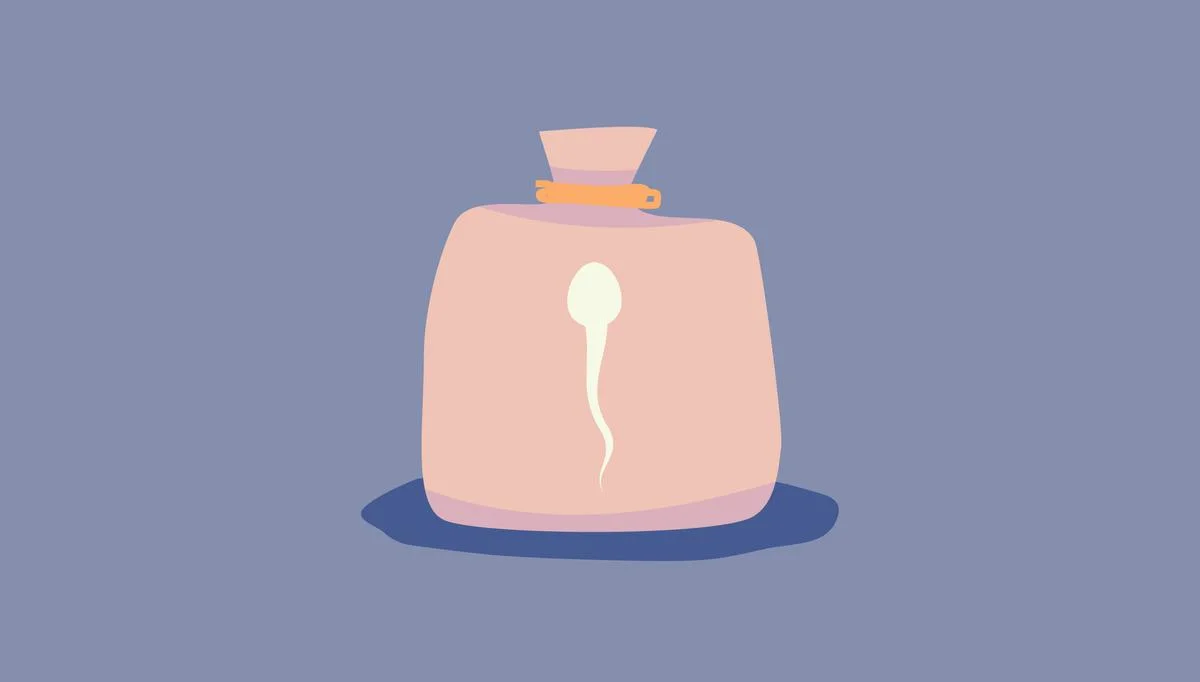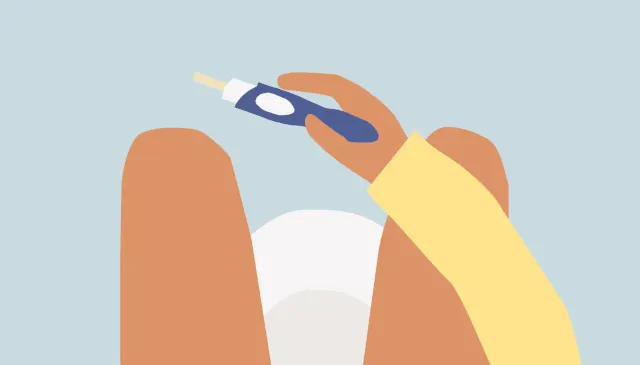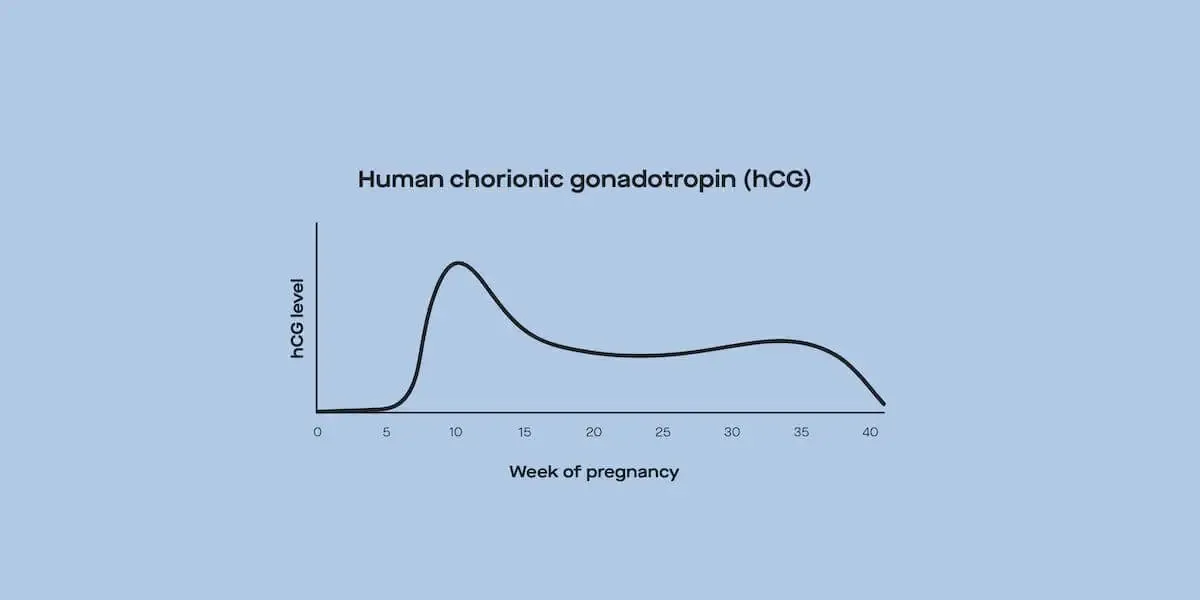Here's what we'll cover
Here's what we'll cover
People with amenorrhea don’t get their period, even though they’ve gone through puberty and are not pregnant or experiencing menopause.
Amenorrhea is different than having an irregular menstrual cycle or skipping a period now and then––it’s the absence of menstruation.
If you think you may have amenorrhea, it’s a good idea to set up an appointment with a healthcare professional. In many cases, amenorrhea is treatable and often points to an underlying condition like hyperthyroidism, polycystic ovary syndrome (PCOS), and more.
The good news is, once the underlying issue is treated, periods typically go back to normal.
What is amenorrhea?
To put it simply, amenorrhea is when you don’t get your period. For some, it means never getting your period despite reaching the age of puberty. For others, it could be their menstrual cycle ceasing, even if they used to get it regularly.
Since menstruation requires communication between many systems in the body, amenorrhea can be the result of issues in the brain, uterus, ovaries, and more. This particular condition is often triggered by another health issue, so you may notice additional symptoms like excess facial hair, hair loss, headaches, lack of breast development, milky discharge from nipples, or changes in vision. Other risk factors for amenorrhea include (Klein-b, 2019):
Eating disorders or a poor diet
Family history of amenorrhea
Athletic training or extreme exercise
Reproductive surgical procedures
Underlying health conditions
Types of amenorrhea
There are two types of amenorrhea: primary amenorrhea and secondary amenorrhea.
Primary amenorrhea
Primary amenorrhea is the absence of menstruation in a person who hasn’t had a period by age 15. Researchers estimate that less than 1% of girls in the U.S. primary amenorrhea (Gasner, 2021).
Secondary amenorrhea
Secondary amenorrhea is the absence of menstruation in a person who’s gotten periods in the past. It’s considered amenorrhea if you’ve missed at least three periods in a row, or if you have irregular periods and haven’t experienced one for six months (Lord, 2021).
Causes of amenorrhea
Both primary and secondary amenorrhea can be caused by changing hormone levels or issues with your anatomy (Klein, 2019). Let’s take a closer look at some of the causes of this condition.
Pregnancy, breastfeeding, and menopause
Secondary amenorrhea can occur naturally at different points in your life. This can include when you’re pregnant, breastfeeding, or going through menopause.
If you go to a healthcare provider with amenorrhea and you’re sexually active, the first thing you’ll likely do is take a pregnancy test (Klein, 2019). In order to breastfeed, a hormone called prolactin is produced that allows you to produce breast milk. At the same time this hormone inhibits your period.
Menopause becomes official when you haven’t had a period for at least a year. Menopause usually begins in your 40s or 50s. It’s normal to experience episodes of amenorrhea throughout the menopausal transition. However, if you experience primary ovarian insufficiency or premature ovarian failure, your ovaries may stop working earlier than age 40, which can also cause amenorrhea (Klein, 2019).
Contraceptives and medications
Oral contraceptives like birth control pills, implants, and intrauterine devices (IUDs) all affect your menstrual cycle due to the way they interact with hormone levels (Klein, 2019; Lanzola, 2021).
Certain medications may also make your periods stop. These include (Klein, 2013):
Allergy medications
Antidepressants
Antipsychotics
Blood pressure drugs
Chemotherapy
Opiates
If you’re taking any medications, let your healthcare provider know so they can investigate that as a potential cause for missed periods.
Changes in body weight or stress levels
Lifestyle changes, such as losing weight or increased stress, can also lead to secondary amenorrhea (Klein, 2019).
Eating disorders like anorexia and bulimia may increase your risk of amenorrhea. When the body experiences extreme weight loss or malnutrition, it disrupts various functions in your body––including your menstrual cycle (Klein, 2019).
People who engage in intense exercise and training regimens (like professional athletes) may also stop having periods, due to low body fat. These individuals burn so many calories through their training that some may struggle to increase their caloric intake enough to maintain a healthy body weight (Daily, 2018).
Like excessive exercise and weight loss, stress can also affect estrogen levels leading to a disruption of your menstrual cycle.
Medical conditions
Some health conditions affect hormones that may impact your period. The main ones include (Klein, 2019):
Hypothyroidism or hyperthyroidism: Because your thyroid gland helps regulate your menstrual cycle, people with overactive (hyperthyroidism) or underactive (hypothyroidism) thyroids may also experience amenorrhea.
Pituitary disorders or tumors: Your pituitary gland is located at the base of your brain and is responsible for hormone production. People with pituitary disorders or tumors (whether benign or malignant) may experience disrupted menstrual cycles.
Polycystic ovary syndrome (PCOS): In a typical menstrual cycle, hormone levels rise and fall over the course of a month. People with PCOS, however, have consistently high levels of a male hormone called androgen, which causes side effects like amenorrhea, acne, and facial hair.
Premature menopause: Premature ovarian failure causes premature menopause, and stops ovulation before a woman reaches her 40s, leading to amenorrhea.
Anatomical conditions or procedures
Finally, some people are born without a uterus or fully developed vagina, which prevents a period from happening (Klein, 2019). It's typically not discovered until reaching the age of puberty and they haven’t gotten their period.
Other individuals have a uterus but don't menstruate because something is blocking the exit of their uterus. Uterine scarring (also called Asherman syndrome) is known to interfere with menstrual bleeding (Lord, 2021).
Finally, some people who’ve had surgery to remove their uterus (a hysterectomy) or ovaries (an oophorectomy) will no longer experience menstruation. Other causes of amenorrhea include androgen insensitivity syndrome, and Turner syndrome (Klein, 2019).
How is amenorrhea diagnosed?
If you think you may have amenorrhea, set up an appointment with a healthcare provider or OB-GYN. Some questions they may ask you include:
When your last period was
Whether you’re using birth control
If you’re sexually active
Your diet and how much you exercise
If you’ve experienced any recent stress or weight loss
Your personal medical history
They may also perform a physical examination of your breasts and genitals to look for signs of primary amenorrhea. One classic symptom is the absence of breast development (Klein, 2019).
Additional tests (like a pregnancy test) may be ordered to determine the cause of your amenorrhea. Blood tests can assess your thyroid, ovaries, and prolactin production (if you’re breastfeeding). Imaging tests like an ultrasound or MRI can help doctors diagnose underlying pituitary tumors or abnormalities in the reproductive system (Klein, 2019).
If low estrogen levels are suspected, your doctor may order what’s called a hormone challenge test. This involves prescribing a progestin medication that should cause menstrual bleeding once you stop taking it. This test also indicates if a lack of ovulation or something else is causing your amenorrhea (Klein, 2019).
Treating amenorrhea
Treatments for amenorrhea vary depending on the cause.
For example, hormone replacement therapy or birth control pills may be prescribed to help regulate your menstrual cycle. If there's an obstruction in the vagina or uterus, there are procedures that can be done to remove it (Lord, 2021).
If extreme exercise or a poor diet are contributing, your healthcare provider may make recommendations to improve your nutrition or refer you to a specialist. If stress or an eating disorder are present, they may loop in a mental health provider to help with treatment. Weight gain is often recommended in cases of an eating disorder (Klein, 2019).
Once you treat the underlying cause of your amenorrhea, your period should return––although it may take some time for it to become regular again.
If you’ve missed three menstrual periods in a row or haven’t had a period by age 15, talk to a healthcare professional. In many cases, the underlying cause is treatable.
DISCLAIMER
If you have any medical questions or concerns, please talk to your healthcare provider. The articles on Health Guide are underpinned by peer-reviewed research and information drawn from medical societies and governmental agencies. However, they are not a substitute for professional medical advice, diagnosis, or treatment.
Daily, J. P., & Stumbo, J. R. (2018). Female athlete triad. Primary Care , 45(4), 615–624. doi:10.1016/j.pop.2018.07.004. Retrieved from https://pubmed.ncbi.nlm.nih.gov/30401345/ .
Gasner A, Rehman A. (2021). Primary amenorrhea. In: StatPearls [Internet]. Treasure Island (FL): StatPearls Publishing; 2021 Jan-. Retrieved on Oct. 1, 2021 from https://www.ncbi.nlm.nih.gov/books/NBK554469/ .
Gordon, C. M., Ackerman, K. E., Berga, S. L., Kaplan, J. R., Mastorakos, G., Misra, M., et al. (2017). Functional hypothalamic amenorrhea: an Endocrine Society clinical practice guideline. The Journal of Clinical Endocrinology and Metabolism , 102 (5), 1413–1439. doi: 10.1210/jc.2017-00131. Retrieved from https://pubmed.ncbi.nlm.nih.gov/28368518/
Klein, D. A., & Poth, M. A. (2013). Amenorrhea: an approach to diagnosis and management. American Family Physician , 87 (11), 781–788. Retrieved from https://pubmed.ncbi.nlm.nih.gov/23939500/
Klein, D. A., Paradise, S. L., & Reeder, R. M. (2019). Amenorrhea: a systematic approach to diagnosis and management. American Family Physician , 100 (1), 39–48. Retrieved from https://pubmed.ncbi.nlm.nih.gov/31259490/
Lanzola EL, Ketvertis K. (2021). Intrauterine device. In: StatPearls [Internet]. Treasure Island (FL): StatPearls Publishing; 2021 Jan-. Retrieved on Oct. 1, 2021 from https://www.ncbi.nlm.nih.gov/books/NBK557403/ .
Lord M, Sahni M. (2021). Secondary amenorrhea. In: StatPearls [Internet]. Treasure Island (FL): StatPearls Publishing; 2021 Jan-. Retrieved on Oct. 1, 2021 from https://www.ncbi.nlm.nih.gov/books/NBK431055/ .










